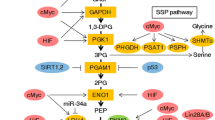Abstract
The evolutionarily conserved Ras proteins function as a point of convergence for different signaling pathways in eukaryotes and have been implicated in both aging and cancer development. InSaccharomyces cerevisiae the plasma membrane proteins Ras1 and Ras2 are sensing the nutritional status of the environments,e.g., the abundance and quality of available carbon sources. The cAMP-protein kinase A pathway is the most explored signaling pathway controlled by Ras proteins; it affects a large number of genes, some of which are important to defend the cell against oxidative stress. In addition, recent analysis has shown that the Ras system of yeast is involved in the development of mitochondria and in regulating their activity. As a sensor of environmental status and an effector of mitochondrial activity, Ras serves as a Rosetta stone of cellular energy transduction. This review summarizes the physical and functional involvement of Ras proteins and Ras-dependent signaling pathways in mitochondrial function inS. cerevisiae. Since mitochondria produce harmful reactive oxygen species as an inevitable byproduct and are partly under control of Ras, illuminating these regulatory interactions may improve our understanding of both cancer and aging.
Similar content being viewed by others
References
Cho J.H., Lee Y.K., Chae C.B.: The modulation of the biological activities of mitochondrial histone Abf2p by yeast PKA and its possible role in the regulation of mitochondrial DNA content during glucose repression.Biochim.Biophys.Acta 1522, 175–186 (2001).
Clark S.G., McGrath J.P., Levinson A.D.: Expression of normal and activated human Ha-ras cDNAs inSaccharomyces cerevisiae.Mol.Cell.Biol. 5, 2746–2752 (1985).
Dejean L., Beauvoit B., Bunoust O., Guerin B., Rigoulet M.: Activation of Ras cascade increases the mitochondrial enzyme content of respiratory competent yeast.Biochem.Biophys.Res.Commun. 293, 1383–1388 (2002).
Devin A., Vallortigara J., Rigoulet M.: The yeast cAMP protein kinase TPK3 is involved in mitochondrial biogenesis.Yeast 20, S50 (2003).
Griffioen G., Swinnen S., Thevelein J.M.: Feedback inhibition on cell wall integrity signaling by Zds1 involves Gsk3 phosphorylation of a cAMP-dependent protein kinase regulatory subunit.J.Biol.Chem. 278, 23460–23471 (2003).
Hlavatá L., Aguilaniu H., Pichová A., Nystróm T.: The oncogenic RAS2(Val19) mutation locks respiration, independently of PKA, in a mode prone to generate ROS.EMBO J. 22, 3337–3345 (2003).
Kirchman P.A., Kim S., Lai C.Y., Jazwinski S.M.: Interorganelle signaling is a determinant of lengevity inSaccharomyces cerevisiae.Genetics 152, 179–190 (1999).
Lee A.C., Fenster B.E., Ito H., Takeda K., Bae N.S., Hirai T., Yu Z.X., Ferrans V.J., Howard B.H., Finkel T.: Ras proteins induce senescence by altering the intracellular levels of reactive oxygen species.J.Biol.Chem. 274, 7936–7940 (1999).
Malumbres M., Barbacid M.: RAS oncogenes: the first 30 years.Nature Rev.Cancer 3, 459–465 (2003).
Matsuura A., Anraku Y.: Characterization of theMKSI gene, a new negative regulator of the Ras-cyclic AMP pathway inSaccharomyces cerevisiae.Mol.Gen.Genet. 238, 6–16 (1993).
McCoy M.S., Bargmann C.I., Weinberg R.A.: Human colon carcinoma Ki-ras2 oncogene and its corresponding proto-oncogene.Mol.Cell.Biol. 4, 1577–1582 (1984).
Mosch H.U., Roberts R.L., Fink G.R.: Ras2 signalsvia the Cde42/Ste20/mitogen-activated protein kinase module to induce filamentous growth inSaccharomyces cerevisiae.Proc.Nat.Acad.Sci.USA 93, 5352–5356 (1996).
Muller G., Bandlow W.: cAMP-dependent protein kinase activity in yeast mitochondria.Z.Naturforsch. C42, 1291–1302 (1987).
Rahman M.U., Kleyman T.R., McEntee C.M., Hudson A.P.: Regulation of mitochondrial cAMP-dependent protein kinase activity in yeast.Biochem.Mol.Biol.Internat. 34, 745–753 (1994).
Robertson L.S., Causton H.C., Young R.A., Fink G.R.: The yeast A kinases differentially regulate iron uptake and respiratory function.Proc.Nat.Acad.Sci.USA 97, 5984–5988 (2000).
Rolland F., Winderickx J., Thevelein J.M.: Glucose-sensing and -signaling mechanisms in yeast.FEMS Yeast Res. 2. 183–201 (2002).
Schmelzle T., Beck T., Martin D.E., Hall M.N.: Activation of the Ras/cyclic AMP suppresses aTOR deficiency in yeast.Mol.Cell.Biol. 24, 338–351 (2004).
Sekito T., Liu Z., Thornton J., Butow R.A.: RTG-dependent mitochondria-to-nucleus signaling is regulated byMKS1 and is linked to formation of yeast prion [URE3].Mol.Biol.Cell. 13, 795–804 (2002).
Shih C., Shilo B.Z., Goldfarb M.P., Dannenberg A., Weinberg R.A.: Passage of phenotypes of chemically transformed cellsvia transfection of DNA and chromatin.Proc.Nat.Acad.Sci.USA 76, 5714–5718 (1979).
Skulachev V.P.: Role of uncoupled and non-coupled oxidations in maintenance of safely low levels of oxygen and its one-electron reductants.Quart.Rev.Biophys. 29, 169–202 (1996).
Sreenivas A., Carman G.M.: Phosphorylation of the yeast phospholipid synthesis regulatory protein Opilp by protein kinase A.J.Biol.Chem. 278, 20673–20680 (2003).
Tanaka K., Wood D.R., Lin B.K., Khalil M., Tamanoi F., Cannon J.F.: A dominant activating mutation in the effector region of RAS abolishesIRA2 sensitivity.Mol.Cell.Biol. 12, 631–637 (1992).
Temels G.L., Gibbs J.B., D’Alonzo J.S., Sigal I.S., Scolnick E.M.: Yeast and mammalian Ras proteins have conserved biochemical properties.Nature 313, 700–703 (1985).
Thevelein J.M., de Winde J.H.: Novel sensing mechanism and targets for the cAMP-protein kinase A pathway in the yeastSaccharomyces cerevisiae.Mol.Microbiol. 33, 904–918 (1999).
Wilson B.A., Khalil M., Tamanoi F., Cannon J.F.: New activatedRAS2 mutations identified inSaccharomyces cerevisiae.Oncogene 8, 3441–3445 (1993).
Xue Y., Batlle M., Hirsch J.P.:GPR1 encodes a putative G protein-coupled receptor that associates with the Gpa2p Gα subunit and functions in a Ras-independent pathway.EMBO J. 17, 1996–2007 (1998).
Author information
Authors and Affiliations
Additional information
This work was founded by theCzech Science Foundation (grant no. 301/03/0289; the first author) and by theSwedish Science Research Council (the second author).
Rights and permissions
About this article
Cite this article
Hlavatá, L., Nyström, T. Ras proteins control mitochondrial biogenesis and function inSaccharomyces cerevisiae . Folia Microbiol 48, 725–730 (2003). https://doi.org/10.1007/BF02931505
Received:
Issue Date:
DOI: https://doi.org/10.1007/BF02931505




